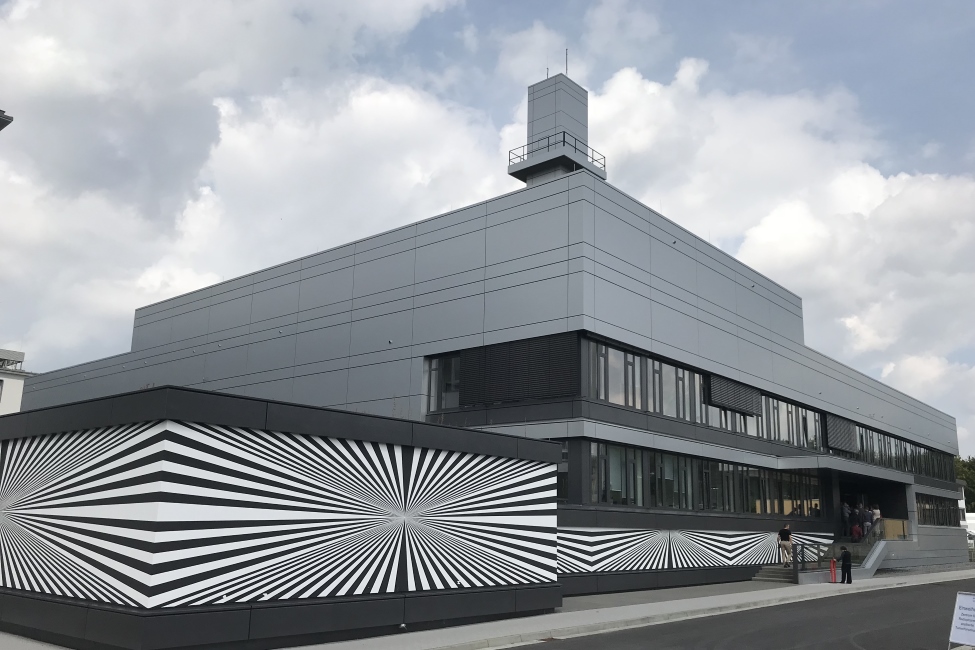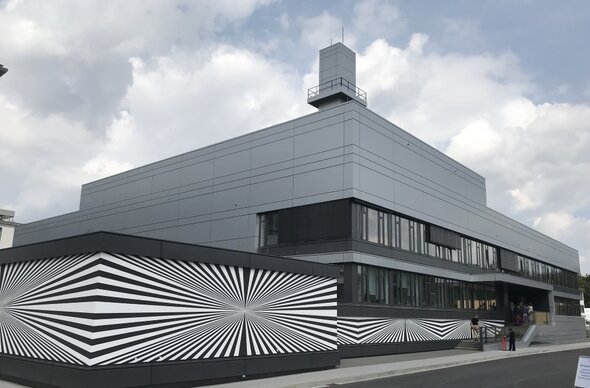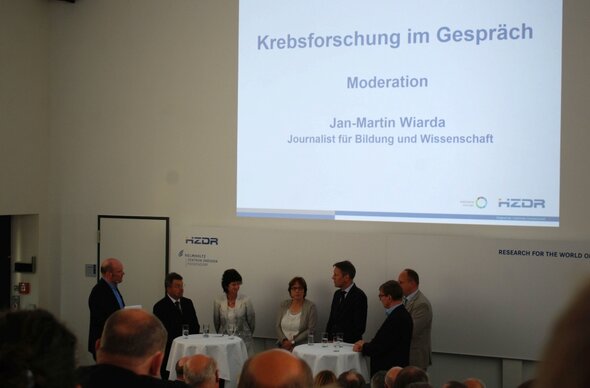INAUGURATION CEREMONY FOR THE CENTER FOR RADIOPHARMACEUTICAL TUMOR RESEARCH AT THE RESEARCH CENTER COMPLEX IN DRESDEN-ROSSENDORF
On 4 September 2018 the Federal Ministry of Education and Research, State Secretary Dr. Georg Schütte, Saxony's economy minister Dr. Eva-Maria Stange, Dresden Mayor Dirk Hilbert and Prof. Otmar Wiestler, President of the Helmholtz Association dedicated the new building at the Helmholtz Center Dresden-Rossendorf in a festive inauguration ceremony with the participation of numerous representatives from politics and the media.
On 4 September 2018 the Federal Ministry of Education and Research, State Secretary Dr. Georg Schütte, Saxony's economy minister Dr. Eva-Maria Stange, Dresden Mayor Dirk Hilbert and Prof. Otmar Wiestler, President of the Helmholtz Association dedicated the new building at the Helmholtz Center Dresden-Rossendorf in a festive inauguration ceremony with the participation of numerous representatives from politics and the media.
The Research Center Rossendorf invested 36 million euros into this new building to assist and advance the development of the earliest possible diagnosis and therapy efficacy for malignant tumor cases. All laboratory facilities for chemical, biological and physical research, certified clean rooms for the production of radioactive medicinal products (radiopharmaceuticals), and a new circular accelerator (cyclotron) are all located in the 4-storey research building on approx. 2,000 m² of space. The building complex also accommodates modern housing areas for the animals used in experiments, as well as imaging facilities for small animals. The Dresden location of KREBS+KIEFER was responsible for the structural engineering, transport planning as well as the building physics services.
The special challenge put forth for the structural framework planners was to develop the supporting structure to the high requirements the researchers had for flexibility, robustness and strength. Planning for the construction of this complex had to consider lead-shielded, radionuclide wiring and piping systems and shielding the equipment from radioactive substances in certain special areas with traffic loads of up to 20 kN/m2.
The planning, request for quotations and construction management of the cyclotron (particle accelerator) bunker was another special challenge; with its 2.7 m thick walls the bunker is to house the cyclotron and provide shielding from radiation.


